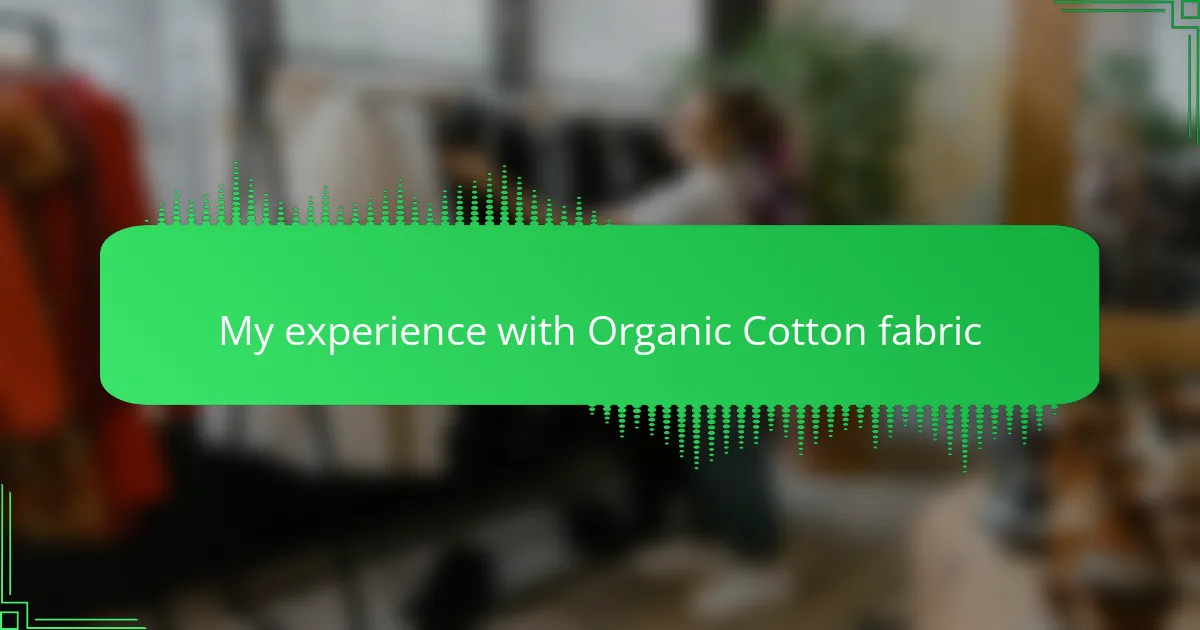Key takeaways
- Organic cotton is grown without harmful chemicals, leading to softer, more breathable fabric and a sustainable farming approach that uses less water.
- Wearing organic cotton t-shirts provides comfort and durability, making them a better long-term choice compared to conventional cotton.
- The design process with organic cotton fosters a deeper connection to sustainability, with its unique properties enhancing creativity.
- Challenges include higher costs, potential texture inconsistencies, and issues with shrinkage, requiring careful handling and adjustment in design practices.
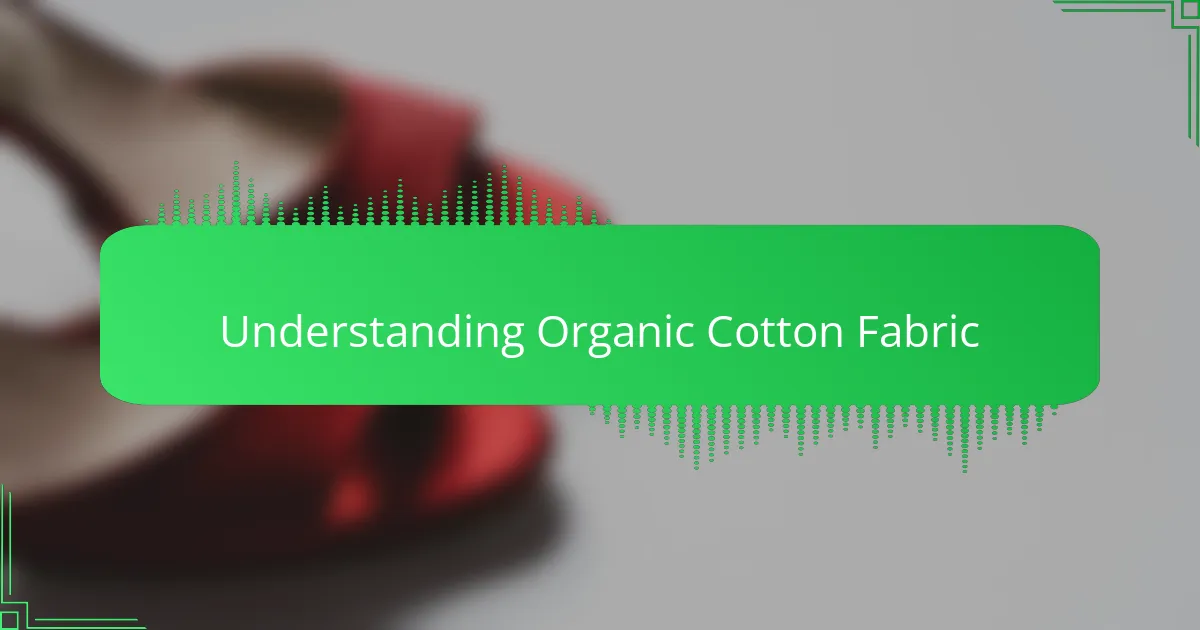
Understanding Organic Cotton Fabric
Organic cotton fabric is grown without harmful pesticides or synthetic fertilizers, which makes a big difference not only for the environment but also for the quality of the material itself. When I first touched organic cotton, I noticed it felt softer and more breathable, almost like the fabric was inviting my skin to breathe freely. Have you ever considered how the way fabric is grown impacts how it feels when worn?
What strikes me most about organic cotton is its connection to sustainability. It’s not just a marketing buzzword; it represents a commitment to kinder farming practices and healthier soil. I remember reading about how organic cotton farming uses less water, and it made me appreciate that choosing this fabric means supporting a cycle that respects nature rather than depleting it.
Understanding organic cotton also means recognizing the care behind every thread. Unlike conventional cotton, which can be treated harshly during production, organic cotton usually undergoes gentler processing. This means when you design a t-shirt with organic cotton, you’re not just creating a product—you’re crafting an experience that feels authentic and meaningful to both the maker and the wearer.
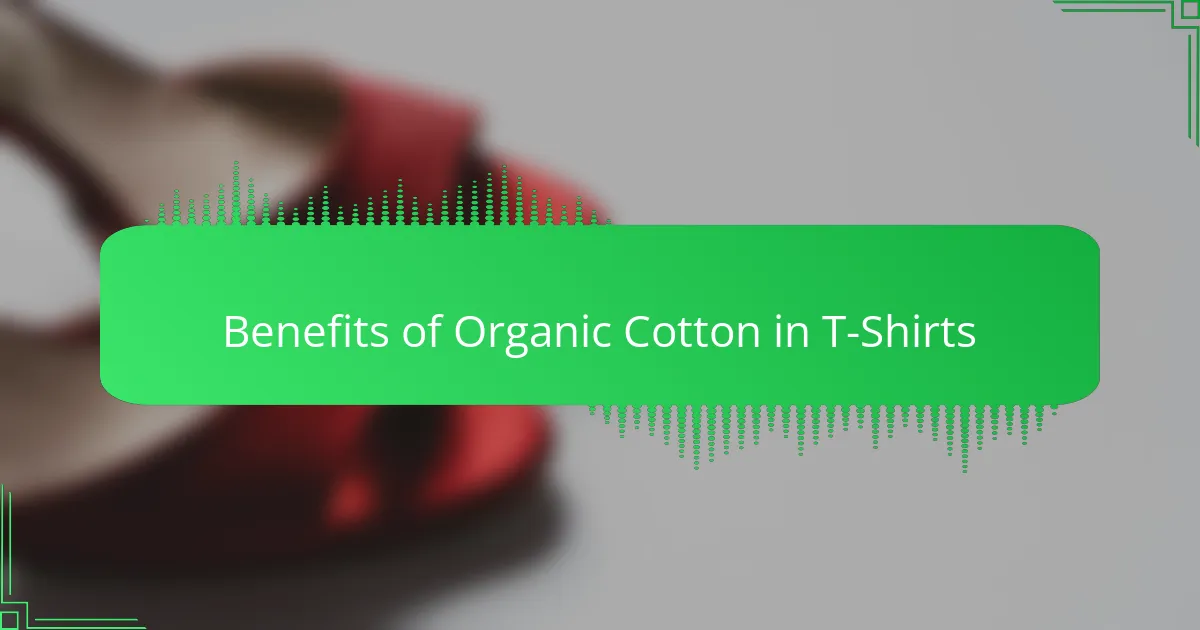
Benefits of Organic Cotton in T-Shirts
One of the biggest benefits I found with organic cotton t-shirts is how gentle they feel on the skin. After wearing conventional cotton for years, switching to organic was like giving my skin a breath of fresh air—less irritation, more comfort. Have you ever noticed how some fabrics just seem to cling or itch? Organic cotton avoids that completely.
Another thing that really stands out is how durable organic cotton tends to be, despite its softness. I was surprised to see my organic cotton tees hold up beautifully after many washes, without losing their shape or becoming rough. It made me realize that choosing organic doesn’t mean sacrificing quality; in fact, it often means getting a longer-lasting, better-performing shirt.
Plus, there’s something powerful about knowing you’re supporting a product that aligns with ethical and environmental values. Wearing an organic cotton t-shirt feels like a small but meaningful act—something tangible I can do to promote sustainability. Doesn’t that sense of purpose add an extra layer of satisfaction to something as simple as putting on a favorite tee?
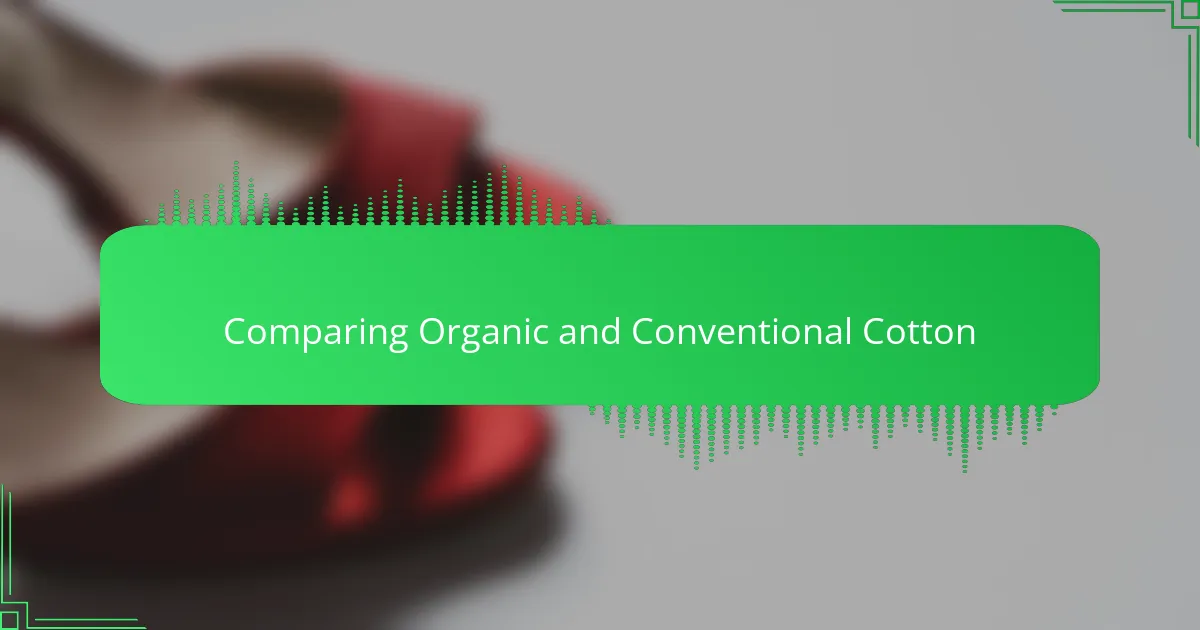
Comparing Organic and Conventional Cotton
What I consistently notice when comparing organic and conventional cotton is how differently they impact both the environment and the wearer. Conventional cotton relies heavily on pesticides and synthetic chemicals, which makes me uneasy considering the toll on farmers and ecosystems. Have you ever thought about how those chemicals might linger in the fabric you wear every day?
On the other hand, organic cotton’s natural growing process feels like a breath of fresh air—not just metaphorically but literally. The absence of harsh treatments means organic cotton fibers often feel smoother and more vibrant, which I find makes a huge difference when creating comfortable, high-quality t-shirts. It’s like the fabric tells its own story of care and respect for nature.
What’s really interesting is how the long-term effects play out; conventional cotton might seem cheaper upfront, but I’ve seen organic cotton t-shirts last longer and maintain their softness after many washes. That durability, paired with the comfort, makes me wonder why conventional cotton remains so dominant when organic is clearly better for both people and the planet. Don’t you think choosing the fabric should be as thoughtful as the design itself?
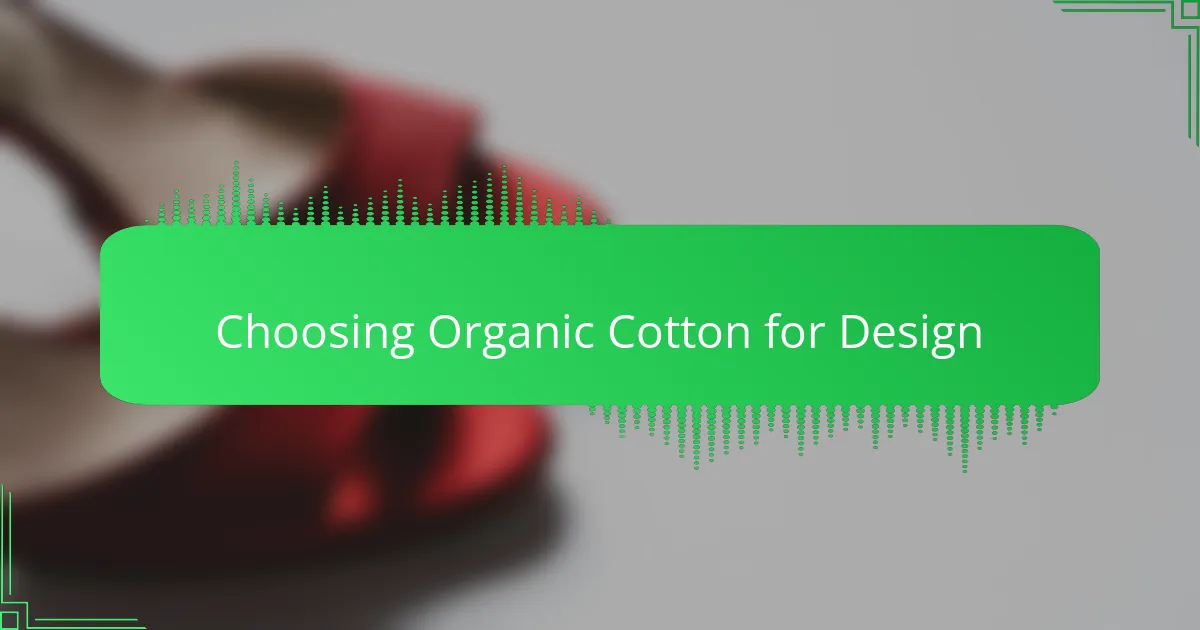
Choosing Organic Cotton for Design
When I first decided to design with organic cotton, I was curious if the fabric would truly meet my creative expectations. It surprised me how well organic cotton took to dye and held prints without losing that natural softness. Have you ever struggled with a design idea only to realize the fabric itself can make or break the final look?
Choosing organic cotton also feels like aligning my design choices with my values, which makes each t-shirt more meaningful. I recall an earlier project where the organic cotton’s texture inspired subtle, eco-themed graphics that wouldn’t have had the same effect on smoother, synthetic fabrics. This connection between material and design deepened my appreciation for the creative process.
From a practical standpoint, I’ve found organic cotton’s durability a real asset in design work. Knowing the fabric can last wash after wash while keeping its shape means I can confidently invest in detailed prints and expect them to shine over time. Isn’t it great when your fabric not only looks good but performs well long-term?
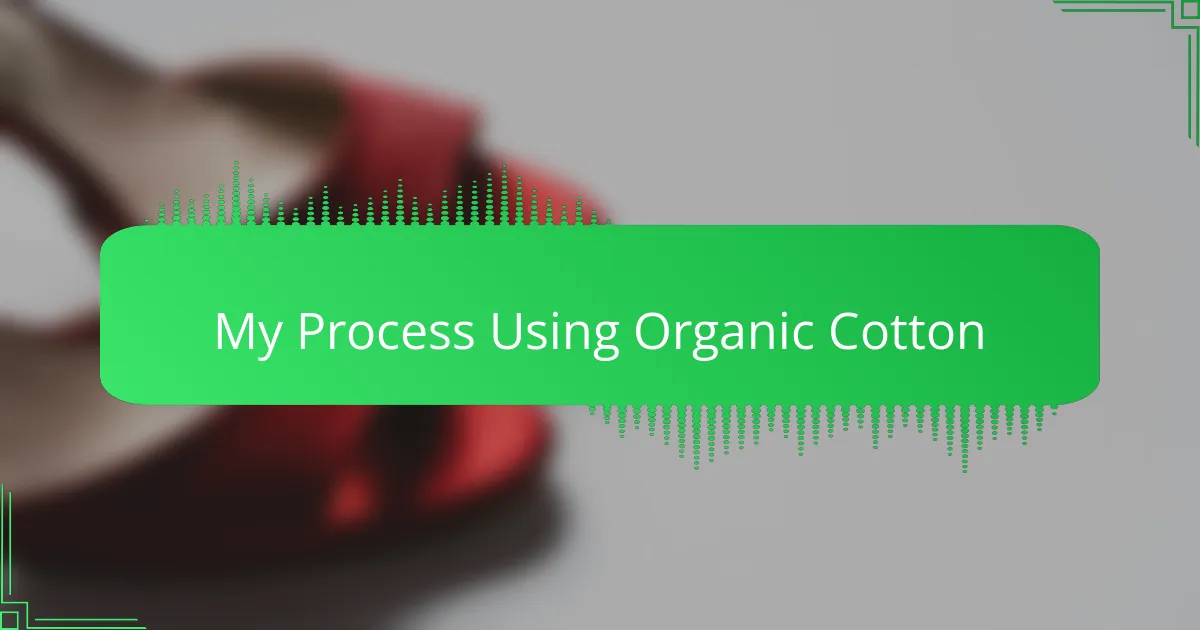
My Process Using Organic Cotton
Working with organic cotton in my design process feels like partnering with a fabric that truly respects both nature and craft. I start by carefully selecting organic cotton sources that guarantee purity and sustainability, ensuring the foundation of my t-shirts is solid. Have you ever noticed how choosing the right fabric sets the tone for the entire creation? For me, organic cotton sets a calm, thoughtful rhythm that guides each step.
Once the fabric arrives, I treat it gently, often pre-washing to maintain its softness and prevent any unexpected shrinkage later on. Handling organic cotton feels different—it almost encourages me to slow down and pay closer attention to texture and weight. This mindfulness improves how I cut and sew, making the final product feel intentionally crafted rather than mass-produced.
Printing designs on organic cotton is another part of the journey where precision matters. I’ve learned that the fabric’s natural fibers absorb dyes uniquely, requiring adjustments in ink density and curing times. It’s a bit like having a conversation with the material itself—listening and responding until the print feels vibrant yet true to the fabric’s understated charm. Doesn’t that personal interaction make the design process more rewarding?
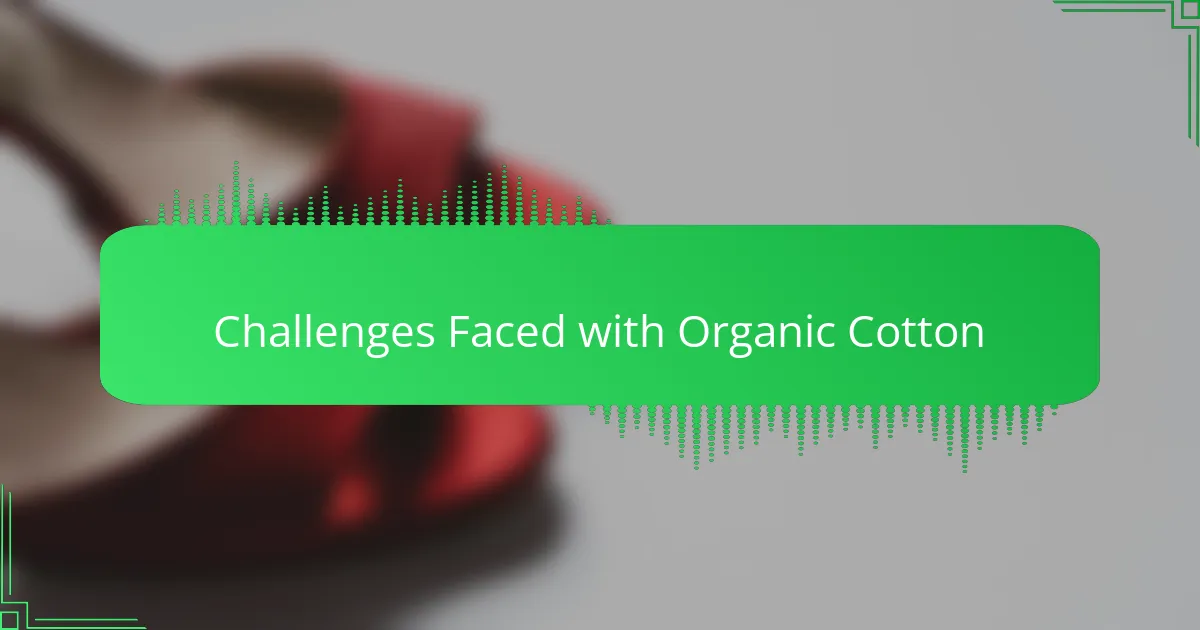
Challenges Faced with Organic Cotton
Working with organic cotton hasn’t been without its hurdles. I remember one time when a batch of fabric arrived with a slightly uneven texture that made printing a bit tricky—suddenly, what looked perfect on paper didn’t translate as well onto the tee. Have you ever faced moments where the material itself challenges your creative flow? That was one for me, reminding me that organic cotton’s natural qualities mean less uniformity but also more character.
Another challenge I ran into is the higher cost of organic cotton. Initially, it felt like a gamble to invest more upfront with no guarantee customers would see the value in paying extra. Yet, over time, I realized this expense is tied to ethical farming practices and superior quality. Still, balancing cost and customer expectations can be a tightrope walk in t-shirt design—especially when competing against conventional cotton options that flood the market at lower prices.
The last hurdle I want to mention is shrinkage. Even with gentle pre-washing, organic cotton tends to react differently than conventional fabrics once it hits the wash. I had a batch where some tees shrank more than anticipated, forcing me to rethink sizing and care instructions. Don’t you think it’s surprising how such a “natural” fabric can keep you on your toes in the design process? That unpredictability, though sometimes frustrating, also makes me appreciate the authentic feel of organic cotton even more.
